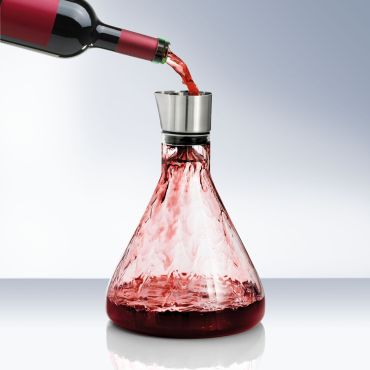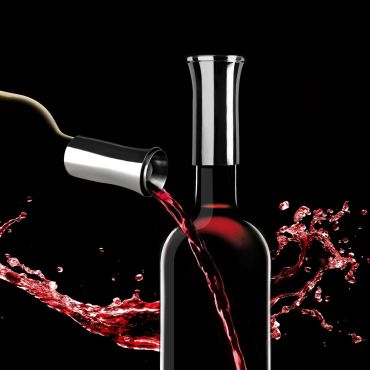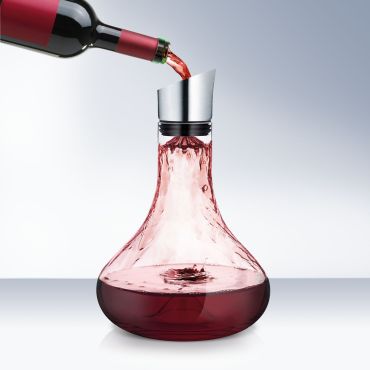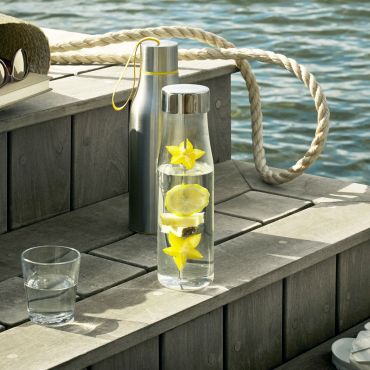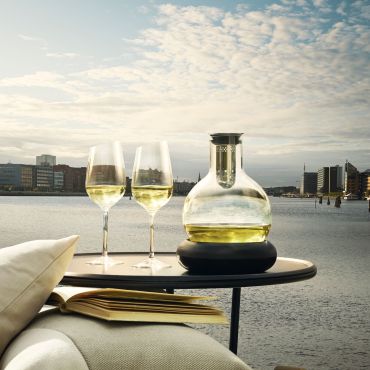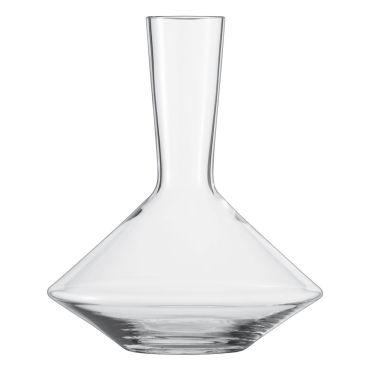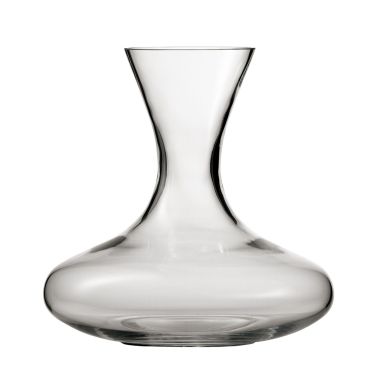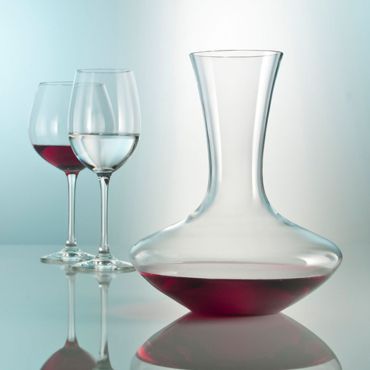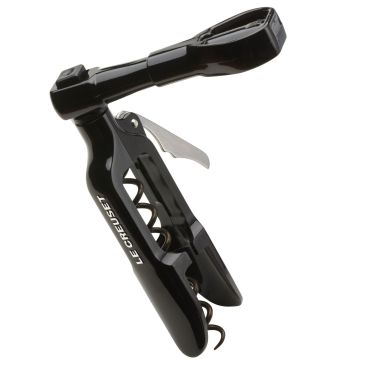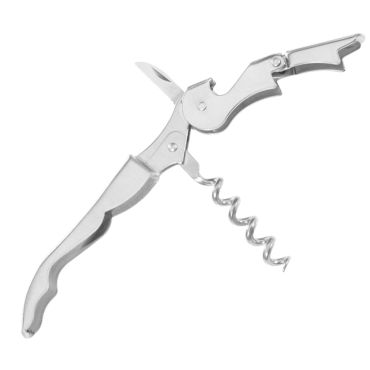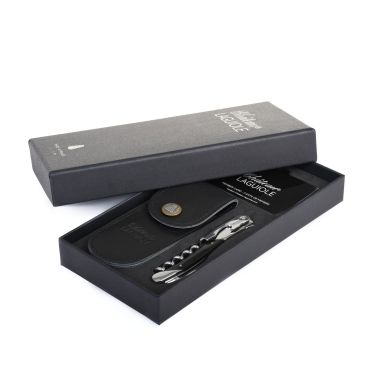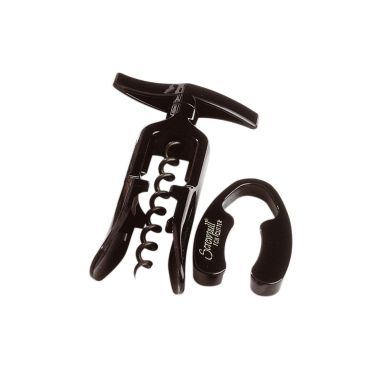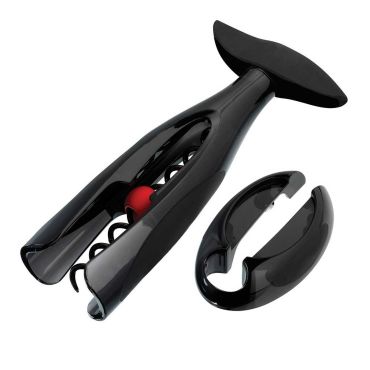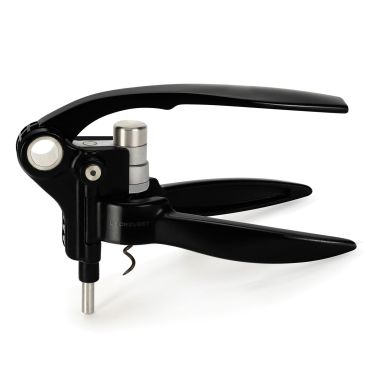Wine Accessories Guide
The right glass for the wine: glasses for each grape variety
The development of the bouquet and the taste of the wine are affected by the shape and volume of the glass. As an instrument of pleasure in drinking, the glass has a direct influence on judging a wine.
In order to make a visual inspection of a wine, ascertain its colour, clarity and consistency, you need a colourless, undecorated glass. Similarly, the sides of the glass should be thin, to allow you to perceive the temperature immediately. Thick-sided glasses have the disadvantage that the temperature of the glass is transmitted to the drink. The bouquet of the wine is reinforced by swirling the glass. An enlarged evaporation surface allows the diversity and strength of the aromas to develop more quickly.
Some glass manufacturers produce specially designed glasses, in which the aroma of the respective grape variety can develop individually. Riedel was the first glass manufactory to develop glasses specific to different grape varieties.
There are three parts to a wine glass: bowl, stem and foot. A grape variety specific wine glass is distinguished by three variable factors in the bowl: shape, size and diameter of the rim of the glass. The task of this wine glass is to translate the "message" of the wine into the language of the senses.
The function of the glass is to harmoniously blend bouquet, taste, colour, balance and finish of the wine.
Bouquet: A grape variety specific wine glass is responsible for the wine's aroma, its quality and intensity.
Texture: A grape variety specific wine glass accentuates the sensation produced in the mouth by the wine (watery, soft, silky, velvety).
Taste: A grape variety specific wine glass creates the balance between fruit flavour, minerality, acidity and bitter chemical compounds.
Finish: A grape variety specific wine glass brings out a pleasant, sustained, harmonious and lasting taste.
The right glass makes drinking your wine a special indulgence!
Decanters: Why should you aerate a wine?
Decant your wines for even greater pleasure! Great wines deserve to develop completely, so that you can enjoy them with all your senses.
Older wines should be decanted in order to rid them of any deposits, such as sediments and younger wines should be decanted to promote oxygen enrichment and to release the aromas. Decanting allows the wine to "ripen" and lets the bouquet develop more quickly.
In order to enjoy the full aroma of young (red) wines, the bottle should be opened eight to twelve hours prior to drinking in order to guarantee a sufficient supply of oxygen. However, if the wine is decanted, this reduces the time needed by the wine to become enriched with oxygen.
Decanted red wine surrounds the palate with a wider variety of fruit flavours and tends to integrate and balance tannins.
If young wines are decanted, the bottle can be tipped directly into the decanter. In this process the wine should glide into the container in a surge, to promote the supply of oxygen. Decanting young wines before serving them gives the wine the chance to develop and to reach a degree of maturity, which would otherwise only be reached by years of being stored.
If you wish to avoid sediments from old wines, pour the wine slowly into a decanter or through a decanter funnel with a sieve, in order to leave the sediment in the bottle.
Decanting a wine is also a pleasure to watch: observing how the wine runs down the sides into an elegantly proportioned glass container.
➔ You can find more decanters here
Corkscrews: Which models are available?
Great care must always be taken when uncorking a wine, since a crumbled wine cork can reduce the pleasure in the wine. There is a huge range of corkscrews. However, do not opt for the least expensive and you should ensure that it has a long spiral, which is not too thick.
With a good corkscrew, a cork can be removed from the bottle with ease and without destroying the cork. In good models the cork can also be easily unscrewed or removed from the spindle.
The spindle or spiral is extremely important. It must be long enough to be twisted deep into the cork, which must not break. It must not be too thick, since that would make it difficult to twist in and the cork could also break. In its centre the spindle should encircle a hollow space, known as the soul.
The screw-pull corkscrew is particularly durable and effortless to operate: the cork is not only removed from the bottle, but is also twisted off the spiral. Up to 2,000 bottles can be opened before the spindle needs changing.
Waiter's knife / sommelier knife
Professionals and sommelier frequently uncork bottles using a waiter's knife, or sommelier knife. This is an important utensil in upmarket catering establishments, since unlike a normal corkscrew it combines three "tools": a cap cutter in the form of a knife, a corkscrew and a bottle-opener. The knife removes the tin foil cap enclosing the cork. The spindle is twisted into the cork and should have the same features as those described above. The lever is placed on the neck of the bottle and by means of the hinge and the lever effect the cork is released.
The handle (grip plate) of a waiter's knife can be made of various materials. The most hardwearing models are made of stainless steel. There are many more exclusive examples made of wood or horn, particularly the French Laguiole corkscrews, but their handles are not quite so resilient and durable.
Table-mounted and lever corkscrews
Table-mounted corkscrews are used primarily in the catering industry. They are firmly attached to a table top or work surface. The bottle is pressed against the corkscrew from underneath and the lever is moved forward, which causes the spindle to twist into the cork. The lever is then pulled back and the cork is released from the bottle. In this way a series of bottles can be uncorked one after the other.
The lever corkscrew works on the same principle as the table-mounted corkscrew. The difference is that the lever corkscrew is a mobile hand-held device. It has a pincer-like mechanism, which is operated with one hand holding the bottle steady. The other hand operates the lever.
Air-pump corkscrews
With air-pump corkscrews a hollow needle is driven through the cork into the bottle. Gas (e.g. air) is injected through this hollow needle into the bottle to produce overpressure, which forces the cork from the bottle.
Clip or spring tongue corkscrews
In the case of particularly old bottles, where it can be assumed that the cork will crumble or where the cork has already crumbled, a clip corkscrew is more useful. The cork is not damaged by a spiral, but is raised gently upwards by two steel springs, also known as "tongues".
Initially the tongues are positioned to the right and left between the cork and the neck of the bottle. Next, the tongues are manipulated with a see-sawing movement between cork and bottle neck and finally the cork is unscrewed under tension from the bottle. The spring tongue corkscrew is not suitable for plastic corks.
Spring tongue corkscrews can not only be used to remove a cork from a bottle, but also to replace the cork in the bottle. To do this, the device is screwed into the bottle and with a see-sawing movement pulled out without the cork. This leaves the cork undamaged.
➔ You can find more corkscrews here
Which other wine accessories are useful?
Wine and champagne bottle stoppers
Once a bottle of wine, sparkling wine or champagne has been opened, oxygen enters and after a while alters the taste. In the case of sparkling wine or champagne this reduces the amount of carbon dioxide in the wine and it becomes flat. So, if you want to preserve the taste of the wine and the sparkle of the sparkling wine or champagne, you must reseal the bottle. The cork cannot be used, because it expands and will not fit into the bottle any more. There are many bottle stoppers on the market, with a variety of mechanisms and functions. The important thing is that the stopper seals the bottle tightly and allows no oxygen or odours into the bottle, especially if the bottle is to be stored in the refrigerator. Models, with which the air can be removed from an opened bottle, thus providing a simple method of creating a vacuum for preserving the wine, are particularly suitable.
Bottle coolers
What would a good meal be without the perfect wine to accompany it? What is a celebration of a special occasion without sparkling wine or champagne? Interrupting the lovely mood to trek backwards and forwards to the refrigerator is not to be desired. Therefore, a bottle cooler is an essential ingredient for an atmospheric evening!
There is a wide range of models to choose from. The classic wine cooler is filled with ice cubes and the bottle placed in the cooler. This ensures that the drink is cooled quickly and stays cool. The disadvantage is that the labels rapidly become detached. A clean solution is a bottle cooler which uses freezer packs which can be placed in the freezer and replaced.
Many bottle coolers keep the wine cool by means of the material they are made from and their insulation. With these coolers the bottle should have been pre-cooled, but the effect does not last as long.
Another option for cooling is the cooling collar, which encases the bottle; this is particularly practical for picnics.
Order in the wine collection
Hanging tags, labelling systems or small slates make for a well-organised wine collection. They remove the need to search for and pull out a bottle.
